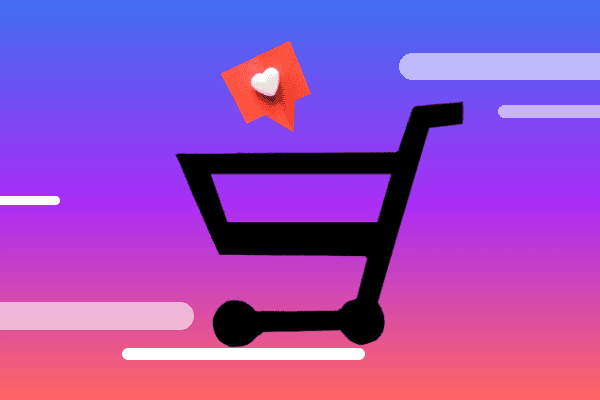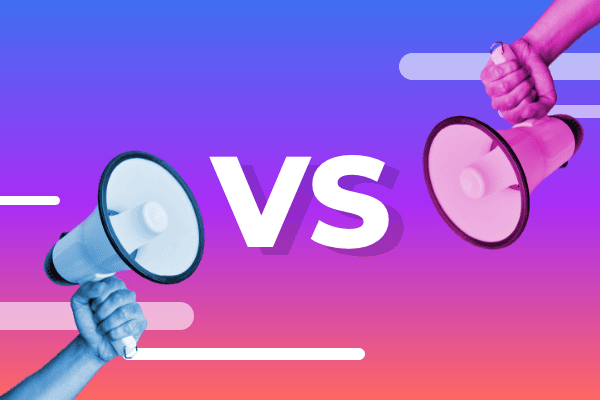Summary
Full-funnel retail media has gone from an industry hypothesis to the dominant approach in just a few years, driven by the need to meet shoppers wherever they are, not just where the sale happens. Targeting shapes more than just who sees your ads—it defines how your entire retail media strategy operates. From bidding logic to creative sequencing, the smartest teams are using audience decisions to guide everything else. Full-funnel retail media audience targeting isn’t about more spend or fancier placements—it’s about building intentional, responsive paths that move with your shopper, not ahead of them
There’s no clean funnel anymore. Shoppers bounce between categories, devices, store visits, and PDPs. They enter and exit brand touchpoints constantly. So when a media team intersects with them, that person could be at any point in their decision-making.
Targeting used to mean picking the right audience. Now it means understanding where that audience is in their journey—and acting accordingly. The shift isn’t just about finding more segments. It’s about using the segments you already have more strategically, across the funnel.
In the 2025 State of Retail Media report, 59% of marketers surveyed said that they use full-funnel retail media to influence shoppers at every stage.
How are you thinking about your audiences?
Are you pigeonholing them into a single funnel stage?
Smarter segmentation in action
The average retail media strategy today includes seven different retail media networks. That means more levers to pull—but also more chances for audiences to slip through the cracks. With retail media spend accelerating across channels, marketers aren’t short on options. What’s harder is using those options with intention.
61% of marketers in the 2025 State of Retail Media report said full-funnel strategies help ensure consistent messaging. But consistent doesn’t mean uniform. A discount for a first-time shopper shouldn’t be the same as a loyalty play. A retargeting ad for a cart abandoner shouldn’t look like a reactivation message for a lapsed customer. And yet—without the right structure—these different paths start to blur.
This is where smart segmentation shows its value. Not by adding more audiences to your plan, but by using the ones you already have more effectively. Below is a breakdown of how nine core audience types can be applied across the funnel with sharper intent. Not just to drive conversions—but to drive progression.
Many of you are probably already thinking this way and using your targeting in an omnishopper way. This is not meant as a guide but rather an exercise to help you think more broadly about how each of your retail media audiences might be used effectively across the funnel.
Recent purchasers are usually excluded from campaigns to avoid wasting impressions on people who already converted.
Ideas across the funnel
- Top: Build high-performing lookalikes based on their timing, purchase triggers, or category behavior.
- Middle: Introduce relevant adjacent products or use-case expansions to spark repeat engagement.
- Bottom: Trigger personalized reorder flows, subscription offers, or loyalty nudges based on repurchase cadence.
- These audiences are often undervalued, but they represent one of the easiest pathways to LTV. The key is shifting from exclusion to thoughtful reactivation.
Cart abandoners are often hit with repetitive discounts, assuming price is the only blocker.
Ideas across the funnel
- Top: Use aggregate abandon patterns to fine-tune audience qualification and eliminate early friction.
- Middle: Test messaging that addresses common hesitations—delivery time, return policy, or product reviews.
- Bottom: Serve urgency cues like low stock, restock alerts, or limited-time bundles to encourage conversion.
- Instead of treating abandonment as a failure, treat it as feedback. The right follow-up depends on why they paused in the first place.
Repeat buyers and loyalists are generally lumped into standard retargeting or left out to avoid overspend.
Ideas across the funnel
- Top: Seed loyalty-based lookalikes to expand into audiences with long-term potential.
- Middle: Educate with brand content that highlights exclusives, sustainability, or new lines they haven’t tried.
- Bottom: Offer early access, restock alerts, or skip targeting altogether to protect margin.
- This group doesn’t need to be convinced—they need to be respected. Sometimes the smartest media move is knowing when not to show up.
High-intent shoppers are usually flooded with conversion CTAs, regardless of what’s holding them back.
Ideas across the funnel
- Top: Capture their early signals (e.g., long dwell on PDPs) to inform smarter prospecting models.
- Middle: Present comparison charts, trust elements, or financing options to move them forward.
- Bottom: Surface personalized offers, delivery guarantees, or urgency-based creative.
- These shoppers are close. But the last step often hinges on one well-timed reassurance, not more pressure.
Ad engagers / retargeted visitors are often treated like bottom-funnel prospects the moment they click.
Ideas across the funnel
- Top: Retarget lightly with educational content, social proof, or “why choose us” messaging.
- Middle: Serve product highlights, benefit callouts, or deeper storytelling assets.
- Bottom: Push only the most engaged users to product-focused creative or dynamic retargeting.
- Clicks aren’t commitment. Give them space to explore before pushing for the close.
Lookalikes are generally used as high-scale prospecting with limited refinement.
Ideas across the funnel
- Top: Activate broad audiences with brand-building creative tailored to their expected interests.
- Middle: Use behavior overlays—like recency or category affinity—to narrow focus.
- Bottom: Only move into conversion campaigns when the model is grounded in high-intent signals.
- Lookalikes work best when they mirror meaningful behaviors—not just demographics or device IDs.
Seasonal or discount shoppers are typically reactivated only during sale periods with the same blanket offer.
Ideas across the funnel
- Top: Warm them up with pre-sale previews, “mark your calendar” messaging, or early access.
- Middle: Target based on what they responded to last time—category, deal type, or timing.
- Bottom: Post-sale, test upsells, bounce-back offers, or retention flows tied to value.
- Treating these shoppers as long-term plays—rather than one-and-done promo responders—can build habit, not just spikes.
Cross-category browsers are often overlooked because their intent isn’t obvious.
Ideas across the funnel
- Top: Introduce curated collections or “trending together” content to guide discovery.
- Middle: Reinforce product relationships through themed bundles or benefit-driven education.
- Bottom: Offer cart incentives or PDP-based bundles that align with their browsing behavior.
- This group thrives on inspiration. Giving them context—not just more SKUs—can move them toward a confident choice.
Inactive customers are usually sent catch-all “we miss you” campaigns or skipped entirely.
Ideas across the funnel
- Top: Exclude unless recent behaviors signal renewed interest.
- Middle: Reintroduce the brand through what’s changed—new products, faster shipping, better fit.
- Bottom: Time offers or re-engagement triggers based on their last known purchase cycle.
- These shoppers don’t need to be reminded they left. They need a reason to believe something’s worth coming back for.
Final thought: targeting is the most strategic media decision you make
Audience strategy isn’t just about who to reach. It defines how to spend, where to show up, and what message gets delivered. It impacts bidding logic, creative selection, measurement clarity, and long-term planning. In a full-funnel environment, targeting is the first and most important lever—and when it’s done right, it’s what turns impressions into progress.
But precision doesn’t start at the bottom of the funnel. It starts much earlier—with small, intentional decisions about how each audience is treated. Are you sequencing messaging or recycling it? Are your offers tailored to the moment, or to your media plan? Are you building systems that support nuance, or defaulting to tactics that scale quickly but perform unevenly?
The teams that are seeing results right now aren’t necessarily the ones spending more. They’re the ones building smarter paths for each audience—paths that respect where the shopper is, and what they need next. That’s where full-funnel retail media creates lift. Not through flashier formats or new inventory, but through strategy that mirrors the way people actually move.
For a deeper look at how to operationalize full-funnel retail media—from audience strategy to activation frameworks—download the Full-Funnel Retail Media Formula Playbook.







